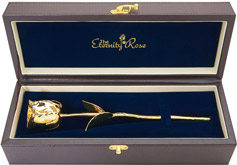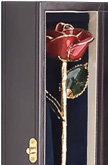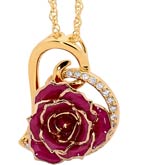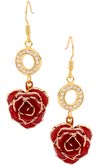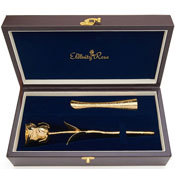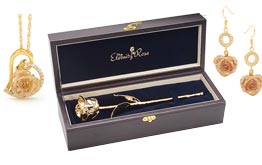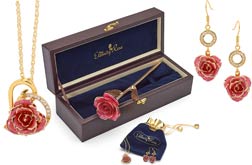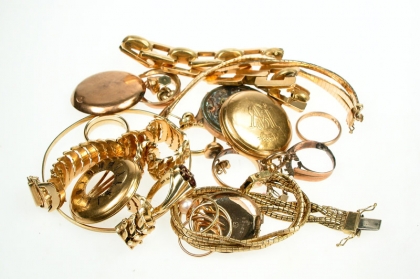Understanding the value of Gold in jewelry and other romantic gifts
Curious about gold but unsure where to start? Begin with understanding karats. Learn more about karat gold and why it holds significance for your Valentine.
Did you know that the use of gold in jewelry traces back to as early as 5000 BCE by the Egyptians? Indeed, many ancient civilizations, including the Sumerians and Minoans, also utilized gold.
Today, gold jewelry remains highly coveted by both men and women worldwide. However, navigating karat gold measurements can be daunting for those lacking familiarity with gold.
What distinguishes their appearances and prices, and what do the numerical markings on jewelry signify? Continue reading to explore karat, gold purity, and why pure gold karats may not always be the optimal choice.
Understanding Karat
Karat serves as a measure of purity, denoting the proportion of gold in the jewelry. It's gauged on a scale of up to 24, with 24-karat jewelry being the purest. For instance, 18-karat gold jewelry consists of 18 parts pure gold out of 24, with the remaining 6 parts comprising other metals.
Typically, the karat of gold jewelry is indicated on the piece itself by a marking—a number followed by one of the symbols denoting karat: k, K, kt, or KT.
If the marking is followed by a "P," it signifies "plumb," indicating the minimum gold content in the jewelry. For instance, an 18KP mark indicates that the jewelry is at least 18 karats pure.
However, not all jewelry pieces bear purity markings indicated by karats. Some may employ thousandths or percentages to signify the gold content.
For instance, a necklace stamped with 750 or .75 signifies it contains 75% gold, equivalent to 18 karats. Jewelry with higher karats commands higher prices due to its increased gold content.
To ascertain the purity of a piece in percentages using karats, divide the number by 24 and multiply by 100. For example, if you have 14K jewelry, dividing 14 by 24 yields 0.583. Multiply that by 100 to determine that it's 58.3% gold.
Other Constituents
If a piece of jewelry isn't pure gold, what comprises the remaining parts, and why are they significant?
Gold jewelry typically contains nickel, copper, and zinc, with aluminum sometimes included. Mixing gold with these metals enhances its durability.
Gold is inherently soft, even in jewelry applications. Its pure form is too soft to be functional, necessitating the inclusion of other metals to enhance durability.
However, a drawback of reduced gold content is diminished value. Additionally, these metals influence the color of gold, resulting in a less pronounced gold appearance.
Notably, gold adopts varied hues when combined with other metals. White gold, derived from nickel and zinc, possesses a distinctive hue. Pink gold derives its color solely from copper, while green gold incorporates copper, silver, and zinc.
For individuals allergic to these metals, opting for higher karat jewelry reduces the likelihood of allergic reactions. However, such pieces require careful maintenance, as they are prone to scratching and damage, even with occasional wear.
Distinguishing Karat Gold Values
Common karats of gold found in jewelry stores include 10K, 14K, 18K, 20K, and 22K. While 24K jewelry exists, its rarity is due to its softness, rendering it impractical for everyday wear.
It's worth noting that in some countries, a variation of +/- 0.5 karats is permissible in the absence of the "P" designation. Consequently, an 18K jewelry piece may contain anywhere between 17.5K and 18.5K gold.
24K Gold
While nearly 100% gold jewelry is desirable, it may not be the most practical for daily wear. As such, individuals often reserve expensive 24K jewelry for special occasions.
Consider gifting your loved one an exquisite Eternity Rose that has been preserved and dipped in 24K gold, along with a matching vase, for a romantic gesture that endures.
22K Gold
Comprising 92% gold and 8% other metals, 22K jewelry offers improved durability compared to 24K. However, it remains relatively soft and susceptible to scratching and bending, limiting its suitability for daily wear.
18K Gold
Containing 75% gold and 25% other metals, 18K gold jewelry represents a popular choice for enthusiasts. It boasts high-quality craftsmanship suitable for regular wear while retaining its lustrous gold appearance.
14K Gold
With 58% gold and 42% other metals, 14K gold jewelry is ideally suited for daily wear. It's a preferred option for wedding bands and romantic gifts, such as those exchanged on Valentine's Day.
European jewelry may bear a fineness mark of 585, equivalent to 14K gold.
10K Gold
Featuring a higher ratio of alloy metals to gold, 10K gold is a more budget-friendly option. While lacking the visual appeal of higher karat jewelry, it offers an accessible entry point into gold jewelry ownership.
Pricing of Gold
Jewelry shops consider factors beyond purity, such as gram weight, design, and craftsmanship, when pricing gold jewelry. Consequently, pricing may not fully reflect the intricacy and artistry of the piece.
Selecting Gold Jewelry for Your Loved Ones
Whether opting for lower or higher karat gold jewelry, any occasion can be made memorable with the perfect gift. For a truly special gesture on Valentine's Day, anniversaries, or any significant event, explore our exquisite collection.









